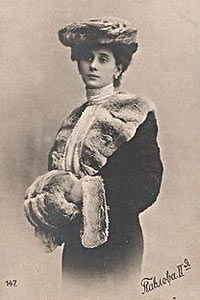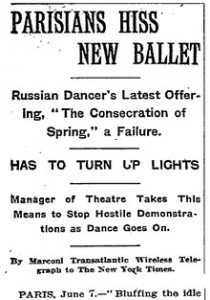Being an astrology buff, some time ago I found an intriguing article about the asteroid Terpsichore – which I’d never heard of – having prominent placement in the charts of more than several famous dancers. The article, from www.daykeeperjournal.com, is titled “Celestial Musings – Asteroid Terpsichore in the Natal Charts of Famous Dancers”. The author Alex Miller, writes about the charts of the legendary Nijinsky and Pavlova to Gene Kelly, Fred Astaire and into more modern times – mentions Michael Jackson.
Alex describes that Terpsichore “in the birth chart, …can show where we give delight a physical expression, as well as indicating a love of dance and movement if strongly aspected. Graceful, fluid motion can be a hallmark of individuals with Terpsichore prominent, whether channeled into formal dance education or not.”
Here are more highlights from the article:
“Terpsichore was one of the Nine Muses, bringers of inspiration in classical Greek mythology. According to Hesiod, the Muses are the offspring of Zeus and Mnemosyne, his Titaness aunt, whose name literally means “memory.” Mnemosyne was one of Zeus’ earliest conquests, predating his marriage to Hera, while he was still sowing his wild oats (though, in truth, Zeus was a lifelong sower!).
After overthrowing her 11 brothers and sisters and setting himself up as head deity of the Olympians, Zeus sought a way to preserve the memory of his accomplishments, keeping them ever green. So he sought out Mnemosyne, whom he wooed in the guise of a shepherd; the couple slept together on nine consecutive nights, and nine months later, the Muses were born, one each on nine consecutive days (divine conception and gestation varying somewhat from that of mortals).
In classic times the Greeks sorted out various areas of special influence among the originally undifferentiated nine sisters. Terpsichore (whose name means “delight in dance”) became the muse of dance and dramatic choral works. She is usually depicted as seated, with a lyre for accompaniment.
Given Muse Terpsichore’s rulership of dance, it’s not surprising to find that her asteroid namesake has an affinity with the astrological charts of famous dancers, from Isadora Duncan to Michael Jackson. Terpsichore in this capacity is often astrologically linked to the Sun, expressing the life force and creative core of the native, how they self-identify; to Venus, ancient ruler of dancers as well as the arts in general and all things of aesthetic sensibility or beauty; to Saturn, the career path and the ability to master skills; or to Neptune, modern ruler of dance, music and theatrical presentation.
Isadora Duncan, Scorpio Terpsichore trine Saturn: Isadora Duncan was considered by many to be the creator of modern dance. Although an American citizen, Duncan received little acclaim in her native country, but was famed throughout fin de siècle Europe, bursting on the Paris scene in 1900 to universal adulation. Duncan rejected the stiff formality of traditional ballet, deriding it as “ugly and against nature,” and developed an improvisational style that created a revolution in dance.
Born 27 May 1877, Isadora Duncan’s natal Terpsichore at 27 Scorpio is astrologically trine natal Saturn at 19 Pisces, identifying dance as pivotal in her career, as well as revealing her role as an educator.
Anna Pavlova, Terpsichore in Libra, trine Sun: Anna Pavlova and Vaslav Nijinsky were two early 20th century dancers who helped to establish Russian ballet as the finest in the world. Pavlova was widely regarded as the best classical ballerina of her day, a protégé of dance mogul Sergei Diaghilev of the Ballet Russe, and star performer of the Imperial Russian Ballet. She later created her own dance company and was the first ballerina to tour the globe. Her most famous performance was the creation of the lead role in “The Dying Swan” in 1905, a ballet based on the music of Camille Saint-Saens.
Vaslav Nijinsky, Terpsichore in Aries conjunct Venus: Nijinsky was another protege of Diaghilev’s. He is often cited as the greatest male dancer of the 20th century. He frequently performed en pointe, that is, on tip-toe, a rare skill in male dancers, and was noted for his apparently gravity-defying leaps and the intensity of his performances, which may have had something to do with an erratic temperament that was later diagnosed as schizophrenia.
Ginger Rogers and Fred Astaire, Terpsichore in opposing signs: Born 10 May 1899, Fred Astaire’s natal Terpsichore at 27 Gemini conjoins Neptune at 23 Gemini, opposing Saturn at 22 Sagittarius. Ginger Rogers’ (born 16 July 1911) natal Terpsichore at 5 Sagittarius is sesquiquadrate to a Sun/Neptune conjunction at 23 and 21 Cancer, and squared Venus at 8 Virgo. Although not opposed by astrological degree, Astaire and Rogers’ Terpsichores in opposing signs made them the perfect dance partners, complementing each other’s strengths and compensating for their weaknesses.
Gene Kelly, Terpsichore in Pisces opposed Sun and Venus: Gene Kelly shares the spotlight with Fred Astaire as one of America’s most prominent male dancers on film. Star of such popular hits as “Anchors Aweigh” (1945), “An American in Paris” (1951) and “Singin’ in the Rain” (1952), Kelly was noted for his athletic, energetic dance style and aggressive good looks.”
The article continues with dancers such as Rudolf Nureyev, Mikhail Baryshnikov, Ann Miller, Twyla Tharpe and more. For you astrology buffs or anyone interested in dance and dance history, I encourage you to read the full article – a most interesting read.

